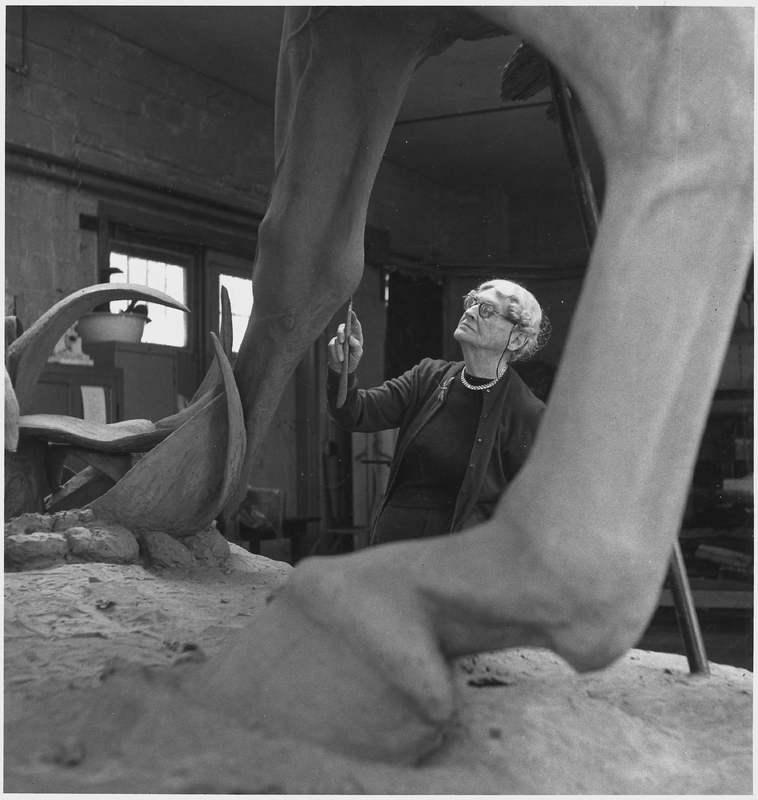Stallions and the Huntington Legacy
The Stallions
The Fighting Stallions statue by Anna Hyatt Huntington quickly became a well-known part of the San Marcos campus upon their arrival in 1951. Today's students may not know the history of the sculpture, but they recognize the artwork as a free speech area on campus.
Long a symbol of freedom, the ornate statuary group formally called "Fighting Stallions" has served as a dramatic backdrop for countless social rallies, political protests, and anti-war demonstrations since it was installed on the Texas State campus during an era of uncertain peace in the early 1950s. Its history reflects diverse contexts that include foundational education, women artists, philanthropy, city planning, and a family’s enduring sense of place. S1
Archer and Anna Huntington
Archer Huntington remains well-known for his life-long philanthropy in support of cultural institutions. As evidenced by his correspondence with Dr. Flowers, Archer handled the business of donations while Anna focused on making art. Together they established museums, parks, and wildlife preserves and donated many pieces of Anna's sculpture.
Women sculptors in Anna's time were expected to produce small pieces suitable for displaying in homes and gardens -- an expectation that Anna refuted. In later years, Anna lamented the popularity of abstract modern art but continued to sculpt large realistic works into her 80s. Her last sculpture, a statue of Jose Julian Marti, was completed when she was 81 years old. While considered a rather unconventional artist in her day, she is widely recognized for her large-scale animal sculptures - especially horses.
Neither Archer nor Anna were able to travel to San Marcos to see the Stallions installed on campus. Archer Huntington died in December 1955 at age 85. Anna died in October 1973 at the age of 97. They are buried in Woodlawn Cemetery in New York. Both Archer's and Anna's papers are held at Syracuse University. Some of Anna's papers are also held by the Smithsonian Institution as part of the Archives of American Art.


